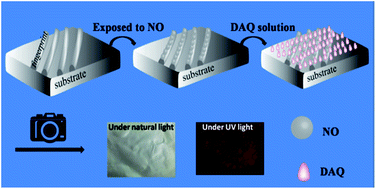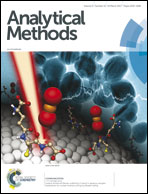Detection of latent fingerprints based on gas phase adsorption of NO and subsequent application of an ultrasonically nebulized fluorescent probe
Abstract
A novel method for latent fingerprint (LFP) detection was developed, which is based on the specific adsorption of nitric oxide (NO) on the hydrophobic ridges of fingerprints and the visualization of the fluorescence image after application of a fluorescent probe 1,2-diaminoanthraquinone (DAQ). The inherent lipophilic properties of NO allow its selective adsorption on the lipid component of fingerprints and DAQ is able to react with the adsorbed NO forming a fluorescent product, the 1,2-diaminoanthraquinone triazole derivative (DAQ-TZ). Through this two-step treatment and a CCD imaging process, the obtained fluorescent LFPs were satisfactory, and the second and third level information can be clearly observed. The method was proved to be universally applicable to many different substrate materials and effective for LFPs aged as long as 30 days.



 Please wait while we load your content...
Please wait while we load your content...